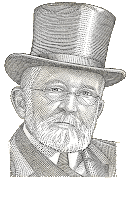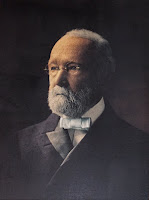
1973. That year, on behalf of the House Foreign Affairs Committee I led an onsite study of four Asian countries that had been recipients of USAID population assistance. The study found a number of problems besetting the programs, the most serious being the waste of more than $1 million on vasectomy/IUD materials that had been left moldering unused in warehouses in South Korea and the U.S. This was fallout from Dr. Ravenholt’s belief that simply supplying birth control materials guaranteed their use. When the Korea Mission Director, Mike Adler, a distinguished USAID executive, said “no more,” Dr. R tried to have him fired. Our report backed Adler strongly. Dr. R. dismissed it as the work of “amateurs.”
1975. I led a study of USAID family planning programs in six countries of West Africa. Once again the report detailed problems relating to Ravenholt’s belief that supply created demand. The program largely was ignoring concomitant health needs in woefully under-served African populations. The report also leveled strong criticism of USAID contributions to the International Planned Parenthood Federation (IPPF) for ignoring Congressional strictures against funding abortion and for lending U.S. program funds to senior employees interest-free for personal use, also a violation of law. By now Dr. R. was seeing me as a prime antagonist.

Later in 1976. Imagine Dr. R’s concern when the Carter Administration put me in charge of the transition at USAID. He advanced a candidate to be his superior, someone without qualifications but in thrall to him. That individual subsequently was turned down. Through his brother, the staff director for a powerful senator, Dr. R made a feint at stopping my appointment as head of USAID’s Asia Bureau. It failed.
Early in 1977. After only a few days at the Asia Bureau, I received a communique from the mission director in Nepal saying that some 50,000 condoms foisted on him had reached their expiration date and asked my permission to burn them. In a response entitled “The Smell of Burning Rubber,” I criticized Ravenholt’s policy that initiated the condoms and suggested instead of burning the Mission bury them. The memo “went viral” at USAID.
Later in 1977. Dr. R called an Asia-wide conference of all population staff that was held in the Philippines. I attended. There he proposed ending the program in Indonesia, one that in its initial stages had been promising. He likely expected I would jump at the opportunity. No way, I responded. We would double down on success.
1978: By now the Asia & Pacific Bureau was moving ahead strongly in health-integrated family planning with robust projects in Philippines, Bangladesh and Sri Lanka as well as Indonesia, a start-up in India at the government’s request, and agreement by the Catholic cardinal of the Philippines to a USAID-funded sterilization program. Soon the Bureau would be accounted the world’s largest single purchaser of condoms and birth control pills. Dr. R. began complaining about our spending USAID dollars he thought were his.
1979: Dr. R contracted for and bought 250,000 “menstrual regulation kits,” a euphemism for abortion ensembles involving a variety of hard plastic instruments. After personally examining the kits and finding that they violated the legal prohibition against abortion, I notified the Administrator who ordered that they not be used. After they were sent to a warehouse, Dr. R complained that I was against “the most effective means of birth control.” Indeed.
1980. Dr. Ravenholt was fired. His assumption is that I had a hand in it. Not true. The impetus came from Capitol Hill where he had angered members by an inflammatory public statement that half the women of the world wanted to be sterilized. The claim had imperiled passage of the foreign aid bill. Dr. R’s immediate boss (Jewish) and the Deputy Administrator (Ethical Concept) lowered the axe. I never lifted a finger. Ravenholt had dug his own grave.
The Rest of the Story: In the book cited above an ally of Dr. R is quoted saying “Both sides of the issue made tremendous mistakes.” Wrong. Integrating birth control with maternal and child health care, something Ravenholt distained, was the key to the successes seen throughout Asia and other parts of the world. My particular pride is in the drastic reduction of family size in Bangladesh as contraception has been adopted. The outcome of the Asia programs should answer Dr. R’s attacks on me as an “anti-family planning Catholic zealot.” As for being an “agent of the Vatican,” if that claim is sufficient to assure my beatification, let it be.
Note: The 2021 book cited at the outset of this post was written by John Norris. Although Author Norris fails to capture the spirit of the many marvelous people who have staffed USAID through the years, he provides a useful “top down” assessment of Agency policy since 1960.














